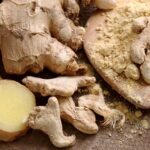The traditional meat and meat products of different Indian regions are now getting more sophisticated as per public demand. Today consumers’ awareness is shaping the Indian meat market. Finally, the upcoming modified government rules and regulations related to food safety and security have created a strong prospect for the Indian meat industry in the present era, opine Pratibha Yadav, Gishali Khullar, Faslu Rahman, and Tameem Farooq.
Table of Contents
Animal products play an important role in the Indian socio-economic life. It is a rich source of high-quality animal products such as milk, meat, and eggs. India has good potential for meat and meat production because of the large livestock population, as here the largest meat producer species is poultry, which is followed by bovine, goat, and sheep. In India, meat production has tripled over the last four decades and increased 20% in just the last 10 years.
However, production of meat and meat products is largely an unorganised activity in India (Thakur et al., 2012). The unregulated meat markets, tropical climate, inadequate abattoir hygiene measures, and the absence of surveillance of meatborne diseases enhance the risk of meatborne diseases and occupational hazards (Singh et al., 2013). For insights into how packaging can improve meat handling, see Trends in Packaging of Meat and Meat Products.
The majority of people purchase meat from traditional meat shops, where butchers slaughter a few animals for the sale of meat throughout the day. There are 5,520 registered and 4,707 unregistered slaughterhouses in the country (Govt. of India, 2006). Exports of animal products, including buffalo meat, sheep/goat meat, poultry products, animal casings, milk and milk products, honey, etc., represent an important and significant contribution to the influx of foreign money in the agricultural sector. India’s export of animal products was Rs. 29,813.69 crores in 2017-18; major inclusion was buffalo, sheep/Goat meat. More insights can be found at Meat and Poultry Processing Industry in India.
Currently in India, the livestock sector alone contributes nearly 25.6% of the value of output at current prices of the total value of output in agriculture, fishing and forestry sectors. As per the latest livestock census, the overall contribution of this sector to total GDP is nearly 4.11% at current prices. The meat industry is slowly yet steadily catching pace on the global front, as India exports both frozen and fresh chilled meat to more than 60 countries of the world. The major item of export, de-boned and de-glanded frozen buffalo meat, accounts for 97% of the total meat export. The major markets for Indian buffalo meat are Malaysia and Egypt, and for sheep and goat meat are the UAE, Iran and Jordan. India also exports a small quantity of processed meat to Thailand, Yemen, and Japan and poultry products to Saudi Arabia, Oman, Kuwait, and Qatar.
Changing preferences of market and consumers
Traditionally, meat consumption has been an integral part of the human diet. Higher disposable income, urbanisation, favourable demographics shifts, improved transportation and consumer perceptions regarding quality and safety are changing Indian food, especially meat and meat products, consumption patterns. Food safety has emerged as an important global issue with international trade and public health implications. Meat consumption is affected by many factors, such as price, income, nutritional value, flavour, dietary habits, safety, eating quality, and the convenience of purchase (Zhang et al., 2014).
The Indian meat industry is still growing and is dynamic. As meat consumption preferences of the consumer is changing the meat market is also changing. Type of mince, fat content, country of origin and price are major factors that influence choice Carbon footprint, method of production and brand play a secondary role in determining consumers’ choices of meat. Read about Consumers Demand Transparency on Food Safety.

Indian meat industry and its stage of development
While India has an abundant supply of meat in the form of food animal resources, the meat processing industry is still emerging and is in its juvenile stage. Meat processing covers a spectrum of products from sub-sectors comprising animal husbandry and poultry farms, to bulk frozen meat, chilled meat, packaged meat, and ready-to-eat processed meat and meat products. In the present scenario, there is an enormous scope for meat processing in poultry as well as in red meat. The poultry industry has made considerable progress by developing and marketing value-added products.
Present meat production aspect
In India, meat production has registered a healthy growth from 2.3 million tonnes at the end of the Tenth Five-Year Plan (2006-07) to 5.5 million tonnes at the end of the Eleventh Five-Year Plan (2011-12). Meat production at the beginning of the Twelfth Plan (2012-13) was 5.9 million tonnes, which was further increased to 7.0 million tonnes in 2015-16 (DADF, 2017). In a typical Indian non-vegetarian diet, meat is regarded as a valuable component and an important source of protein. The meat availability in India is only about 15g/person/day against the ICMR recommendation of 30g/person/day (Islam et al., 2016). Here, the traditions and culture influence meat consumption to a great extent (Devi et al., 2014).
Meat production is largely an unorganiseda activity in India (Thakur et al., 2012). The unregulated meat markets, tropical climate, inadequate abattoir hygiene measures and the absence of surveillance of meat-borne diseases enhance the risk of meat-borne diseases and occupational hazards (Singh et al., 2013). The majority of the people purchase meat from traditional meat shops, where butchers slaughter few animals for sale of meat throughout the day. Most of the slaughterhouses in India lack basic amenities like light, ventilation, and water (Ali, 2007).
The slaughtering and carcass-dressing processes are performed in open areas in highly unhygienic conditions, and the meat is sold with little or no veterinary inspection (World Bank, 2011). The fresh meat is sold in unhygienic retail outlets, exposing the meat to dust, leading to contamination. There are chances that raw meat may harbour many important pathogenic microbes making the meat a risk for human health (Norrung et al., 2009).
Here in our country, there are a number of registered slaughterhouses, where animals are being scientifically slaughtered and meat is being frozen and stored in cold storage for export. The meat produced for the domestic market is sold as hot meat. Goat/sheep meat is marketed in villages by slaughtering one or two animals once a week or on special occasions by a group of people joining together and sharing the cost of the meat so obtained. There is not much overhead cost on meat in villages, and realisation on the cost of skin, blood, etc. In the small town, sheep/goat meat is directly marketed to the consumers from meat shops. Since the time gap between slaughter and the sale is very short, the deterioration of the quality of the meat is less. In the big towns and cities, most of the meat is consumed on the same day or kept in a refrigerator in the households (Kumar et al., 2018).
Meat Processing in India
In India, meat is consumed either in curry form with high spices or as processed meat products. Only 2% of the meat is processed in India (APEDA, 2008), the remaining meat is sold in fresh or frozen form. The meat processing industry is still in its, infancy, even though there is a vast scope for processing. Poor infrastructure and investment are hindrances to the level of processing in India. It has been reported that only 6% of poultry meat and 21% of buffalo meat are processed in the organised sector in India (Government of India, 2005).
Even after having a vast scope for the meat processing industry, the processing industry is still in the infant stage (Ali, 2007). Processing meat to value-added products will provide reasonable returns from meat animals to the farmers (Kondiah, 2004). There is very little processing of meat in India, hardly 1% of the total meat produced is used for processing, with the remaining meat sold in fresh or frozen form (Guleria et al., 2015). The meat produced for the domestic market is sold as hot meat (Ranjhan, 2004). The meat processing cost depends on the level of product processing and packaging.
The production cost of meat processing broadly includes labour, capital, raw material, and energy used. The share of raw material accounts for about 80 percent followed by capital investment 8.4percent, wages and salaries 6.1 percent, and energy use accounts for 6.0 percent of total processing cost (Ali, 2007). Meat is a highly perishable food item, and so for hygienic meat production, it should be protected from contamination, dirt, and microbes. Special vans built with metal bodies with ventilation facilities should be used for the transportation of meat carcasses. Meat carcasses should be transported on hooks. The cold chain should be maintained at all the processing stages until it reaches the consumers. The cold chain will slow down or retard the growth of microorganisms (Bharti, 2014).
Now scenario of processed meat business is changing rapidly with entries of top players like Shalimar Super Foods, Venkateswara Hatcheries, Godrej Agrovet, Al-Kabeer, Arpit Enterprises, Allanasons, Mark International,AL Barkat Exports, Nensey Poultry Farm, Prabhat Poultry, Vista Processed Foods, Fiza Exports, Meatzza– Darshan Foods, etc, with an aggressive rise of commodity branding; there is beginning to change the economics of the Indian meat processing industry. Discover the Top 10 Technologies Transforming Food Processing.
India and export scenario
India is exporting most of the carabeef and casings to Vietnam. The demand for Indian buffalo meat in the international market has sparked a sudden increase in meat export. Buffalo meat dominated the export with a contribution of over 89.08%in total animal products export from India (APEDA, 2019). For mutton, India is mainly exports to the United Arab Emirates. For poultry products, Oman is the leading exporting country. Uttar Pradesh, with the largest human and animal population, also leads the country in terms of meat production. Andhra Pradesh has the most poultry production. In India, poultry farming is the most dynamic and fastest-growing sector. For pork production, Uttar Pradesh is also at the top.
Meat by-products production
Animal by-products may be defined as every part of the slaughtered animal except dressed carcass (Irshad and Sharma, 2015). The value of unprocessed by-products from buffalo and sheep in India was reported to be 30% and 35%, respectively (Chatterjee et al., 1991). Among by-products, India is one of the major exporters of animal casing in the world. India has exported animal casing worth Rs.480.66 crores/ 68.49 USD million during the year 2018-19. India has exported most of the casings to Vietnam, Myanmar, South Africa, Malaysia, and Portugal.
Indian meat industry and environmental impact
India is with the world’s largest animal population may be a threat to the environment. As raising animals is itself a tough task, they have a variety of effects on the environment.
Methane production
Methane production during animal production is a common phenomenon and a major cause of greenhouse gases. Decreasing soil fertility due to continuous use of land for fodder production and grazing. Methane comprised 14% of the total greenhouse gas emitted and 7% of this is due to agriculture. The largest fraction of the greenhouse effect from animal production comes from the loss of carbon dioxide absorbing trees, grasses and other year-round plant cover on land where the feed crops are grown and harvested.
Carbon footprint
This is the amount of greenhouse gases emitted during a product’s lifecycle, is evaluated as an indicator of the wider environmental impacts of meat production using existing life cycle assessments of different types of meat (pork, chicken, and beef). The carbon footprint generally acts as an indicator of acidification and eutrophication potential. Carbon footprint is a midpoint indicator, commonly also entitled global warming potential, in which all GHG emitted during a product’s lifetime are qualified and transformed into CO2 equivalents depending on their ability to contribute to global warming.
Although the meat industry is creating an environmental hazard at large scale but meat is also a very good source of nutrients. So to prevent environmental hazard we can use alternate methods and eco-efficiency can be one of them. The objective of eco-efficiency is to use the resources more efficiently and precisely and reduction of waste, with the two-fold benefits of reduced environmental burdens and reduced costs for resources and waste management. For more, see Rising Consumer Shift Towards Sustainability.
Threats to the meat industry
Indian meat and meat processing industry is in a fight for survival these days. The rising championing about veganism, growing concerns about animal welfare, health fear revolving around certain meat and meat products, all are becoming a matter of concern for the meat industry. Recent advances in meat processing systems in addition to the above-described advances in ingredient systems that may be used to manufacture novel meat products, new processing approaches for the industrial manufacturing of meat products are being developed. Fully automated, continuous production processes with material deliveries by meat suppliers just in times can now be found in the meat manufacturing sector (Nollet and Toldra, 2006).
Unorganized meat sector
Meat production is largely an unorganized yet vital segment of the Indian agriculture. Traditional production systems and disorderly practices have flawed the image of the Indian meat industry. The unregulated meat markets, tropical climate, inadequate slaughterhouse hygiene measures and the lack of surveillance of meat-borne diseases enhance the risk of meat-borne diseases and occupational hazards. Most consumers purchase meat from traditional meat shops, where butchers slaughter limited animals for sale of meat throughout the day.
Lacking infrastructure
According to research, there are about 8000 registered and more than 20,000 unregistered slaughter houses in the country and most of them are devoid of basic amenities like light, ventilation; and the slaughtering and carcass-dressing processes are performed in open areas in highly unhygienic conditions following which the meat is sold with little or no veterinary inspection. The fresh meat is sold in insanitary retail outlets exposing the meat to dust leading to contamination and there are chances that raw meat may harbor several pathogenic microbes making the meat a risk for human health.
It is, therefore, necessary to establish modern slaughter-houses to bring improvements in meat-handling practices, recovery and proper utilization of by-products, waste treatments for pollution control to reorganize and strengthen the meat industry on scientific line to provide wholesome and safe meat to the domestic consumption as well as to play a substantial role in international meat trade/market.
India has a colossal livestock population and efficient utilization of these resources including production and utilization of livestock products is important to earn increased returns and sustain livestock production activities. For almost five decades, the country has witnessed the green, white, yellow and blue revolutions. It’s time to realize one more revolution – the red revolution in the form of meat production.
Indian value-added meat products and its present marketing
Value addition is described as economically adding value to the product by changing its place, time and form to characteristics that are more preferred in the market place. The value-added products are not less than a boon for the meat industry, it is helping the meat industry in growing. Also, it helps in better utilization of fresh meat. For example, the shelf life of fresh meat is much less as compared with value-added meat products like nuggets, sausages etc.
There are more than one ways their apps are increasing demand and providing an advantage to the meat industry like they are providing irritable offers to consumers, more convenience as one need not to waste time by cooking or waiting in the restaurant for food to arrive and also, it has increased the reach of the customers to different kind of meat products by simply sitting on their homes. But at the same time, these online food apps are negatively affecting the meat industry as these apps have time boundation and hence may compromise on food quality.
Way forward
Production of good quality animals for slaughter is essential for the production of good quality meat. Hence, farmers’ cooperative can play a major role in the field of production and marketing of quality animals, extension education and encouragement of backward integration/contract farming. Maintain food safety at all stages of production, processing, packing, storage and marketing of meat and meat products, and adherence to standards that are prescribed by the importing countries.
Priorities must be given to address the myths prevalent among the public regarding meat consumption and diseases with proper extension programmes. Meat processing and value addition are key to the prosperity of the meat industry. The awareness regarding the processed meats and the convenience to the consumers and households should be improved.
In general, meat sold in India is in unpacked form. Meat is packed only in certain organized meat factories. For sanitary and secure delivery of the meat and various value-added meat products through the various stages of processing, storage, transport, distribution, and marketing, the packaging is of utmost importance. In recent years, the demand for processed meat and meat products from hotels, fast food restaurant chains, and urban consumers is on an upward spiral in India.
This has led to increased frozen/chilled meat delivery startups that essentially deliver fresh meat within 2-3 hours and it has the added benefit of properly cleaned and cut portions with guaranteed safety and hygiene. Wet markets typically do not deliver to your doorstep nor is it cleaned and cut to right portions for cooking. Education and awareness about processed meat can drive market growth, as highlighted in Innovations in Food Processing.
From a retail standpoint too, there has been a marked increase in the willingness of consumers to try frozen products and they have accepted it as a healthy and quick option for a snack. Over 65% of the population in India is below the age group of 35 years and a majority of them are now exposed to the global media and malls, which is causing the demand for food hygiene to grow by leaps and bounds. With supermarkets and shopping malls spreading to Tier II and III towns, there will be greater support for the growth in the retailing of chilled/ frozen meat and meat products. Consumers are experimenting more and more today and they are ready to spend on worthy and differentiated products, which stand apart in taste and experience.
Also Read: A Meaty Opportunity in Modern Online Meat Retailing
Conclusion
At present the Indian meat industry is gradually expanding in all the aspects of fresh meat marketing, value addition to processed meat, development of specific meat products like designer meat, functional meat etc. for specific groups of consumers, online marketing of meat, and meat products. The traditional meat and meat products of different Indian regions are now getting more sophisticated as per public demands. Gradually improving health-conscious consumers’ awareness has shaped today’s’ Indian meat market. Finally, the upcoming modified government rule and regulations related to food safety and security have designed a strong prospect of the Indian meat industry in the present era.

FAQs on India’s Meat Industry and Production
What is the current state of meat production in India?
Meat production in India has grown significantly, tripling in the last four decades and reaching 7 million tonnes in 2015-16.
Why is the meat industry in India largely unorganized?
Traditional practices, unregulated markets, and inadequate infrastructure contribute to the unorganized nature of the industry.
Which countries are the primary importers of Indian meat?
Major importers include Malaysia and Egypt for buffalo meat, and UAE, Iran, and Jordan for sheep and goat meat.
What percentage of meat in India is processed?
Only 2% of meat in India is processed, with the rest sold fresh or frozen.
What are the environmental challenges associated with meat production in India?
Methane emissions, carbon footprints, and soil degradation are significant environmental concerns.
What are the key factors driving changes in meat consumption patterns in India?
Urbanization, higher disposable incomes, and improved consumer awareness about safety and quality are major drivers.
What steps can improve the Indian meat processing industry?
Modernizing slaughterhouses, implementing cold-chain logistics, and promoting value-added products like nuggets and sausages can help.
How does meat production contribute to India’s economy?
The livestock sector contributes 4.11% to India’s GDP and accounts for 25.6% of the agricultural sector’s output.
Have a news or topic to share with industry? Write to us editorial@pfionline.com
References
- Agricultural and Processed Food Products Export Development Authority (APEDA) (2014). www.apeda.gov.in.
- Ali, J. (2007). Productivity and Efficiency in Indian Meat Processing Industry: ADEA Approach. Indian Journal of Agricultural Economics, 62: 637-648.
- Bharti, M.A. (2014). Examining market challenges pertaining to cold chain in frozen food industry in Indian retail sector. Journal of Management Science and Technology, 2: 33-40.
- Devi, S.M., Balachandar, V., Lee, S.I. and Kim, I.H. (2014). An outline of meat consumption in the indian population – A Pilot Review. Korean Journal for Food Science of Animal Resources, 34: 507-515.
- Government of India (2005). Vision, Strategy and Action Plan for Food Processing Industries in India, Ministry of Food Processing, Government of India, New Delhi.
- Guleria, P., Suman, K., Arshad, K. and Nidhi, D. (2015). Present Scenario of Indian Meat Industry-A Review. International Journal of Enhanced Research in Science, Technology and Engineering, 4: 251-257.
- Islam, M.M., Anjum, S., Modi, R.J. and Wadhwani, K.N. (2016). Scenario of Livestock and Poultry in India and their Contribution to National Economy. International Journal of Science, Environment and Technology,5: 956-965.
- Irshad, A. and Sharma, B.D. (2015). Abbattoir by-product utilization for sustainable Meat Industry: A review. Journal of Animal Production Advances. 5 (6): 681-696.
- Kochewad, S. A., Gadekar, Y.P., Meena, L.R. and Kumar, S. (2017). Meat Production In India- A Review .International Journal of Animal and Veterinary Sciences, 4: 24-49.
- Kondiah, N. (2004). Value added meat products and development of processed meat sector. Natural Product Radiance, 3: 281-283.
- Kumar, R., Prasad, S. and Kumar, S. (2018). Present Status of Indian Meat Industry–A Review. Int. J. Curr. Microbiol, 7: 4627-4634.
- Norrung, B, Andersen, J.K. and Buncic, S. (2009). Main concerns of pathogenic microorganisms in meat safety of meat and processed meat. F. Toldrá, ed. (Springer New York). pp. 3-29.
- Ranjhan, S.K. (2004). Indian Meat Industry Perspective, Food and Agriculture Organization of the United Nations (FAO), Rome, Italy.
- Singh, B.B., Ghatak, S., Banga, H.S., Gill, J.P.S. and Singh, B. (2013). Veterinary urban hygiene: a challenge for India. Revue Scientifique et Technique International Office of Epizootics, 32: 645-656.
- Thakur, D., Ravikumar, R.K., Kumar, P., Gupta, A., Sharma, A., Katoch, S. and Bodh, V.K. (2012). Meat inspection and animal welfare practices: Evidences from north-western Himalayan region, India, Veterinary World, 5: 718-722.
- World Bank (2011). Demand-led transformation of the livestock sector in India: achievements, challenges, and opportunities. Report No. 68901. World Bank, Washington, DC.
- Zhang, H., Sun, S. and Feng, Y. 2014. Analysis of mutton consumption habits and buying behavior in urban and rural area. Xinjiang State Farms Economy 1: 46-51.
















